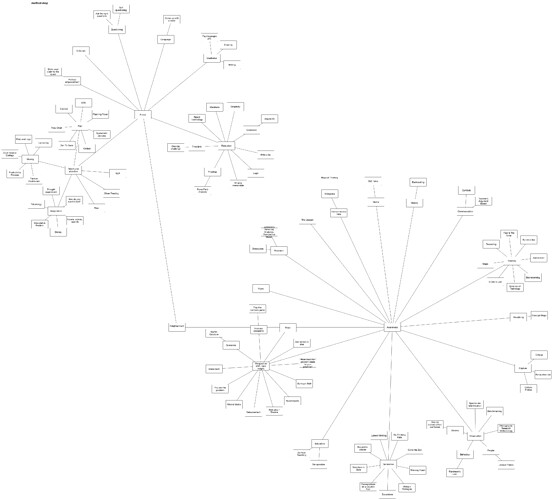In software engineering, a design pattern is a general reusable solution to a commonly occurring problem within a given context
It is a description or template for how to solve a problem that can be used in many different situations. >
This site is for designers, developers, teachers, researchers, geographers, writers and anyone who wishes to drive forward, deepen or focus their creative activities.
Each problem that I solved became a rule, which served afterwards to solve other problems. Rene Descartes
Why do we need a design method?… “Now the real reason…. it gives you rules to break”. Ross Olson >
To use it, search for a keyword in the search box, look through the categories or browse the site.
To get an overview of all methods check out the methods map in the top right menu.
This resource began as a university project (MA Design Critical Practice – Goldsmiths) about Design Methods.
It started off with a brief to create a portfolio of the methods and processes, which I’d used on my masters degree project. For example if I’d used CNC machining than I would include photos and a description of the process and the way I applied it to my project.
For some reason I saw this project in a much wider sense because I conceived that it’s possible to use these tools in more than just design projects and that it could be more than just a set of methods rather a way to facilitate conversations.
I created a hierarchical structure of categories so that I could see how all the information pieced together. I created a top-level category – enlightenment and two more categories focus and awareness which are based on two common states of mind- that of learning and that of focussing deeply on one specific job.
Focus is about focussing in on some projects to refine them and awareness is generative and exploratory to gain more information.
Everything else fitted in subcategories under these two categories.
The initial stage was a collection of as much information as possible, the second stage is to categorise their information, and the third stage is redefining the meaning and accessibility of the information to take it to the next level by facilitating conversations through the website and developing the user experience.
The objectives of the project are to allow end-users such as artists, geographies, IT workers, designers, etc. to pick methods to achieve what they want to do – the teacher wants to generate activities for a lesson then they can quickly find methods to achieve that. A designer wants generate new problems to set a brief. A businessman wants to generate business ideas.
In terms of coming up with a new idea, prototyping it, implementing it, scaling it and each stage of that process requires a different kind of thinking. These methods slot into that process and augmented discussion / workshop / making sessions.
Current webpage: www.designmethodsandprocesses.co.uk
